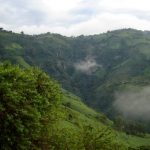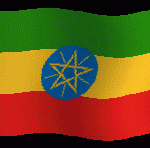Geography
At 435,071 square miles (1,126,829 km2) Ethiopia is the world’s 27th largest country. It lies between latitudes 3° and 15°N, and longitudes 33° and 48°E.
The major portion of Ethiopia lies on the Horn of Africa, which is the easternmost part of the African landmass. Bordering Ethiopia are Sudan and South Sudanto the West,Djibouti and Eritrea to the North,Somalia to the east, and Kenya to the south. Within Ethiopia is a vast highland complex of mountains and dissected plateaus divided by the Great Rift Valley, which runs generally south-west to north-east and is surrounded by lowlands, steppes, or semi-desert. The great diversity of terrain determines wide variations in climate, soils, natural vegetation, and settlement patterns.
Ethiopia is an ecologically diverse country, ranging from the deserts along the eastern border to the tropical forests in the south to extensive Afromontane in the northern and southwestern parts. Lake Tanain the north is the source of theBlue Nile. It also has a large number of endemic species, notably theGelada Baboon, the Walia Ibex and the Ethiopian wolf (or Simien fox). The wide range of altitude has given the country a variety of ecologically distinct areas, this has helped to encourage the evolution of endemic species in ecological isolation.
Source: http://www.gcao.gov.et






Leave a Reply